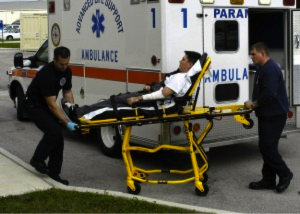While injuries resulting in death are obviously the most serious injuries, injuries causing amputation or dismemberment are a close second. These types of serious injuries are usually permanent, and thus affect both the injured person, as well as their families. In fact, amputation and dismemberment injuries are so serious that victims and their families almost always need to make drastic changes to the way they live, and these injuries impact nearly every aspect of a victim and their families lives.
Next to an injury causing death, amputation injuries are probably the most serious personal injury a person can suffer. These injuries are almost always permanent, and will affect not only the individual but also the victim’s family. There are many concessions that the victim and his or her family must make after such a life-altering event.
This article will address amputation and dismemberment injuries, and how these injuries factor into the compensation a victim could receive.
Two Types of Amputation Injuries
Amputation injuries are defined as those injuries that result in the loss of one of the extremities to a person’s body. Essentially, amputation refers to the loss of a limb, and can either occur during an accident, or surgically as a result of injuries that require an extremity to be removed by a medical professional. The most common amputation injuries involve toes, fingers, hands, feet, legs, or arms. However, eyes may also be subject to amputation as a result of serious injuries.
While surgical amputations are the most common, serious injuries may also result in “traumatic amputation,” which occurs when a body part is torn off. The accidents that most commonly result in traumatic amputation are generally accidents involving motorized vehicles such as serious car accidents, semi-truck accidents, motorcycle accidents, boats, or ATVs. Another common cause of traumatic amputation is the use of heavy equipment, or industrial machinery, which usually occurs in connection with workplace injuries.
Adjusting to Amputation Injuries
Adjusting to the loss of a limb is a traumatic adjustment for victims and their families, both physically and emotionally. Not only is physical recovery from the injury itself a slow and difficult process, but the psychological effects of an amputation injury can take years for victims and their families. Adjusting to live without a limb is a difficult process as the victim embarks on the process of relearning how to do simple everyday things that most of us take for granted.
Financial recovery
Another aspect of recovery after an amputation or dismemberment injury is being able to recover financially. Most often, amputee victims have missed time from work, or have even lost their jobs and the ability to pay their mortgages and every day living expenses. That is why we fight aggressively to help victims of serious injuries receive the fair compensation they deserve. Adequate compensation allows the victim to:
- Pay present and future medical expenses.
- Obtain necessary medical devices or equipment to help them in performing daily activities.
- Replace lost income, including income the person would have received in the future.
- Pay for rehabilitation and physical therapy expenses.
- Pay for psychological treatment for depression, anxiety, or other disorders.
- Hire medical personnel to assist in recovery.
These items can be very costly, many of which will be a continuing expense for the life of the victim. Replacing a victim’s income is of utmost importance, especially when the victim can no longer perform their former employment functions, and must learn a new skill or trade. This is why having the best San Antonio injury lawyer on your side can make recovery from serious injuries easier for victims and their families.
